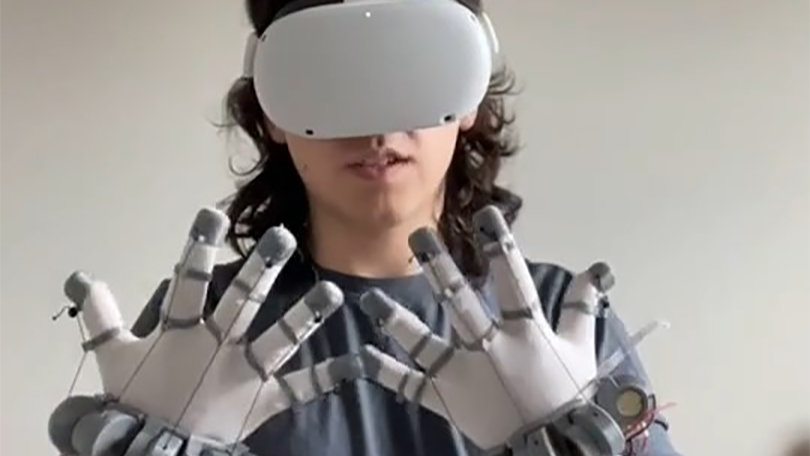Tony Stark-wannabe creates haptic VR gloves for only $22 in parts
You can build these open source, DIY gloves yourself and use them in Half-Life: Alyx.

We recently wrote about things VR technology needs to do better, including the feeling of holding and throwing objects. A controller can only emulate that physical sensation so well, and no major VR company has released gloves that bring full, natural hand controls into VR—probably because the cutting-edge prototypes that exist right now cost tens of thousands of dollars. Here's something more in my price range: a DIY project that looks super cool, and costs about $12 per glove to get real working finger tracking in VR.
For a few months now, young hardware hacker lucas_vrtech has been working on a series of prototype haptic gloves with the goal of making something "cheap and easy" to DIY. The parts list includes dirt cheap components like simple Arduino boards, potentiometers, and rotary springs taken from those little badge reels you've probably seen someone use in an office building. (WD-40 is also listed as an essential ingredient).
"Originally, this was just a fun quarantine project to keep me busy, but 200,000 followers later, this project is now much more than that," Lucas wrote on the project's Hackaday page. "My goal now is to spread this project as far as possible and hopefully help more people fall in love with Virtual Reality."
Lucas primarily posts updates to the project on Tiktok, where he's pulled in more than 300,000 followers since December. It's made remarkable progress in just a few months, going from some giant hand assemblies to gloves that actually look wearable. They're still bulky, but part of the charm is seeing the gloves work with such cheap off-the-shelf parts like those badge reels tethered to each finger.
@lucas_vrtech Prototype 3 in game! ##virtualreality ##vr ##tech
♬ Gravity Falls - L.Dre
The current third prototype works in some VR games, including Half-Life: Alyx, and provides what looks like shockingly good finger tracking. Lucas has published diagrams, parts lists, and an open source driver on Github so other people can build their own.
His fourth prototype is where the gloves get really interesting, though, because they're starting to integrate haptic motors. In a typical game controller, haptic motors are there to rumble in your hands and approximate the feeling of firing a gun or driving over rocky ground. With the PlayStation 5's DualSense Sony has taken haptic feedback much further, adding resistance to its triggers so you can really feel the tension of pulling back a bow string, for example. A VR glove's haptic motors have an even tougher job: using tension to make you feel like you're actually gripping an object as you move your fingers.
Lucas has posted a few videos of this next iteration of the glove, showing some pretty bulky motors now attached around the wrist. The plan is to shrink the components down in prototype five, after this one gets them working properly.
Keep up to date with the most important stories and the best deals, as picked by the PC Gamer team.
@lucas_vrtech Adding force feedback haptics to the VR Haptic Glove! ##vr ##vrhaptic ##virtualreality
♬ Back In Black - AC/DC
Lucas hasn't yet published a detailed tutorial on building a pair of haptic gloves yourself, but considering the pace at which he's developing new iterations, that makes sense. Every week he posts something new that makes the previous version look outdated. It's exciting to watch and reminds me of the early days of VR, when it felt like we were on the cusp of a world-changing technological breakthrough. When VR hardware did finally become available for anyone to buy, the high price was one big reason it took off very slowly. It's inspiring to see VR enthusiasts like Lucas now experimenting with ways to make VR dramatically better on a budget anyone can afford.

Wes has been covering games and hardware for more than 10 years, first at tech sites like The Wirecutter and Tested before joining the PC Gamer team in 2014. Wes plays a little bit of everything, but he'll always jump at the chance to cover emulation and Japanese games.
When he's not obsessively optimizing and re-optimizing a tangle of conveyor belts in Satisfactory (it's really becoming a problem), he's probably playing a 20-year-old Final Fantasy or some opaque ASCII roguelike. With a focus on writing and editing features, he seeks out personal stories and in-depth histories from the corners of PC gaming and its niche communities. 50% pizza by volume (deep dish, to be specific).

